Over a year ago, adidas released a brief video of their ‘Speedfactory’ – a manufacturing concept with the goal of increasing automation. While there’s no dearth of news-pieces on the Speedfactory (this recent Wired article is a good read), there’s nothing out there which explains what’s really going on in the video.
For example, what are the machines seen in the video used for? Are the shoes truly ‘made completely by robots’, as some press headlines screamed? If most of the press coverage is anything to go by, one might assume the following:
1. Robotics is new in the footwear industry, and the Speedfactory is the first of its kind.
2. Shoes in the Speedfactory are made entirely by robots, so the manufacturing process is completely automated.
3. All production of shoes will move from Asia to Germany and the United States in the near future.
4. 3D printing of shoes is imminent at an industrial scale.
Except that none of the above is true.
Automation (including robotics) has been used in footwear manufacturing for a long time (we covered the history lesson here), and the goal of Speedfactory isn’t to replace traditional manufacturing but to complement it. And as you’ll see in the video, processes like upper stitching require a high level of human intervention.
Regardless of the overly enthusiastic press mentions, adidas has made the Speedfactory’s limitations clear in several interviews – here’s a quote by adidas’s CEO Kasper Rorsted from a quartz article:
“It’s a complete illusion to believe that manufacturing can go back to Europe in terms of volume.” In the same article, Mr. Rorsted doesn’t predict full automation being possible in the next five to ten years.
The fact that the two Speedfactories plan a combined production of only a million pairs out of adidas’s 360 million global pairage puts a lot into perspective. And technologies like 3D printing are far from ready as a substitute for traditional manufacturing. And yes, that applies to the latest Carbon 3D printing tech too – which, incidentally, is currently not in use at the Speedfactory.
(A quick note: this is an independently researched article which relies on publicly available information and media assets – all credits and references are mentioned at the end.
At best, this is an educated and reasonably accurate guess of what’s happening inside the Speedfactory. So if you’re from footwear manufacturing and have additional information, please feel to contribute in the comments section below.)
The first adidas Speedfactory was set up in Ansbach, Germany, and the second site in Atlanta soon followed. Both are the result of a partnership with Oechsler Motion AG, a company which specializes in manufacturing automation.
The Speedfactory PR video has a mysterious air about it, and you get a quick glimpse of what’s inside the Speedfactory.
It’s a brief clip, but there is enough material to piece together the process inside the Speedfactory. It also allows us to identify the some of machinery involved in the making of the Futurecraft UltraBoost.
The video opens with a few quick frames revealing equipment parts like flowmeter gauges, pipes, knobs, and switches. One of the shots show a panel with powdery residue on them which appears to be a part of, or within close proximity to a SLS 3D printer.
All SLS (Selective Laser Sintering) parts are created in a vat full of powdery substance, and air blowing the excess residue could have led to the powdery leftover on the switches. The video does not show a 3D printer, but this is our best guess. For reference, here’s a picture from adidas showing the SLS residue being dusted off a 3D printed midsole:
The SLS process differs from the recent ‘Futurecraft 4D’ concept which uses Carbon’s new 3D printing technology. According to this Wired article, the Speedfactory currently does not have Carbon 3D.
It’s worth noting that the 3D printing cannot make a Boost midsole. Molded Boost foam parts are manufactured by another set of machines described in the following section.
The scene changes to another area of the Speedfactory which shows a robotic arm engaged in an operation. That’s followed by several shots which cover materials flowing through a pipe, some movement of mold plates, and then finally, a bunch of finished Ultraboost midsoles and outsoles come into view.
By now, you would know that adidas uses a new material and process to make their Boost midsoles. adidas was the first company to use BASF’s expanded Polyurethane compound (Infinergy e-TPU) in their shoes. The robot + machinery combination you see in the video is what makes the Boost midsole. Here’s taking a better look at the complete set:
When you break this down, you have two separate parts. The first is the particle-foaming machine which produces the Boost midsole, and this equipment is made by a German company called Kurtz Ersa.
The second part is the robot working together with the particle foaming machine. It is supplied by Kuka, a robotics company. Kuka’s industrial robots are used widely across multiple sectors, including automobile manufacturers such as Tesla and Mercedes Benz.
So how does the Kurtz Ersa’s molding machine work, and what is the robot doing here?
The making of the adidas Boost foam is very similar to how EPS is produced. In layman terms, EPS (Expanded Polystyrene) is commonly known as Styrofoam – the lightweight material which is often used to make coffee cups and thermal insulation. Also, most household appliances come boxed with Styrofoam protection during shipping.
This is the reason why the exterior of a Boost midsole and Styrofoam look nearly identical; both use the same manufacturing process.
The video above demonstrates how EPS is manufactured using a similar machine seen in the Speedfactory. The process involves injecting pre-expanded particle foam into the molds and then steam-heating on the outside.
When heat is applied, the colony of particle foam fuses itself in the shape of the mold. In other words, they combine to form an UltraBoost midsole.
Since there’s a lot of heat and heavy molds involved, the Kuka robot allows for a safe retrieval of the molded midsole parts.
This stock image (above) from Kurtz Ersa shows a robot extracting molded EPS parts.
Next, a knitting machine comes into view, followed by laser-cutting performed on the knit upper. This process is fairly simple. The Primeknit upper is knit by the machine seen in the video, and the laser cutter performs the cutting operation.
The computerized knitting machine used is a Stoll CMS 530 HP, and the CO2 laser cutter is manufactured by Eurolaser. Here are the two machines in their stock form:
It’s worth noting that the knitting machine is visible behind the laser cutter, and the latter has a conveyor attachment in the front. Thus it is likely that the knitting machine automatically feeds the fabric to the laser cutter, as shown in the Eurolaser’s image above.
And how does the cutter ensure that the piece of fabric does not move sideways during the layering? If you look closely, the fabric sits on a vented, grid-like structure. This is what keeps the Primeknit component pinned down in the place. Air flows in the reverse direction and creates suction which holds the fabric.
Think of a vacuum cleaner’s nozzle pressed against the palm of your hand – the suction makes your hand stick to the plastic nozzle.
The next stage appears to combine several steps. Here, it seems that a rotary (and metallic) cutter cuts urethane into a general shape; this is further cut into specific shapes by a laser.
A Staubli TS-80 robotic arm picks up these urethane strips and sticks them to the flat Primeknit component. That is followed by passing the upper component through a heat laminator which fuses the urethane strips to the fabric.
Much like Kuka, Staubli is another company specializing in industrial robotics.
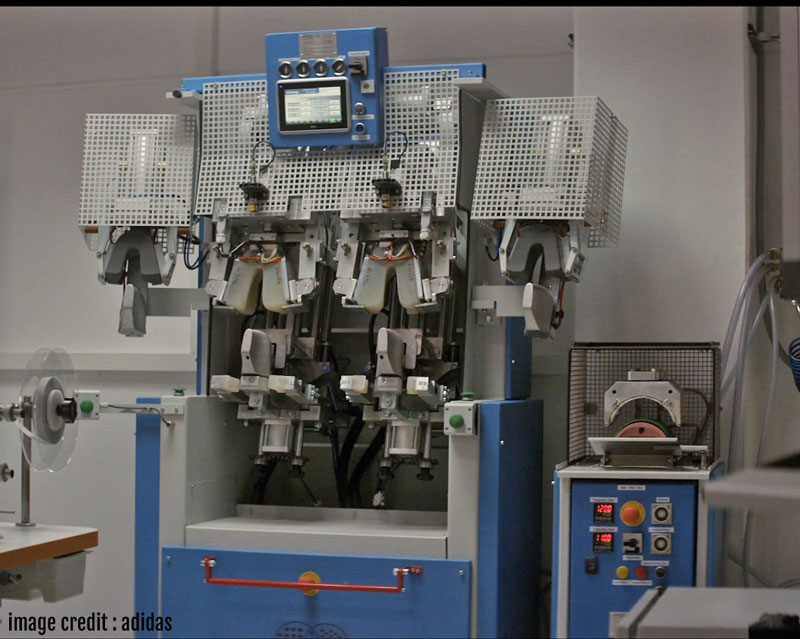
This machine molds the heel counter by applying a combination of heat and pressure along with chilling for the curing process.
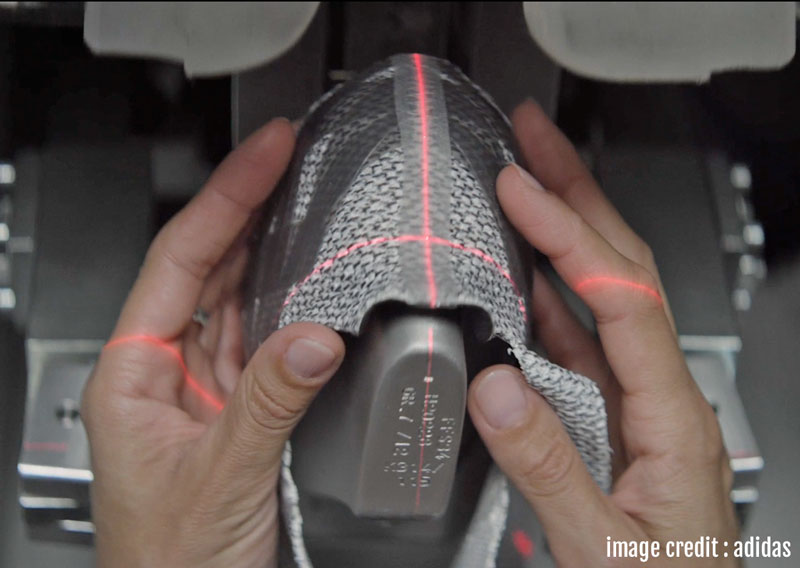
Laser guide which ensures correct positioning for counter molding. Note that the heel has a sealed seam – a process which is not shown in the video.
Here, you get to see the manual part of the Speedfactory. The upper is stitched and then manually transported to a back-part molding machine. This process is what gives the heel counter its curved shape. A stiffener is first attached to the upper using a light adhesive and then molded using this machine.
Counter molding machines have both hot and cold stations. The hot one molds the stiffener material in the shape of the heel counter, and the cold one sets it.
There’s also a toe-stiffener inside the Ultraboost, and this part also needs to be molded. You can glimpse the toe-bumper inside the upper during the stitching operation, and there’s a toe-forming machine just to the right of the main molding machine.
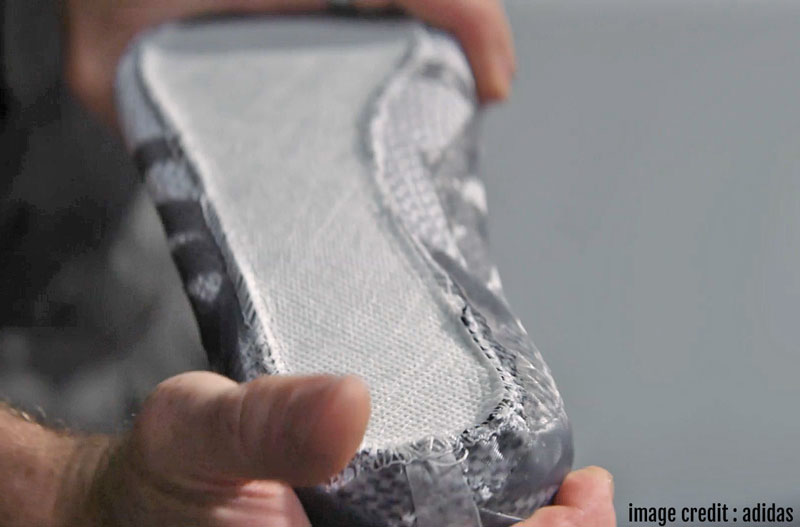
The finished upper is being mounted over a mold. This is to prep it for lasting/attaching with the midsole. The preparation of the upper and midsole with adhesive and priming is not shown in the video, but that is also a part of the manufacturing process.
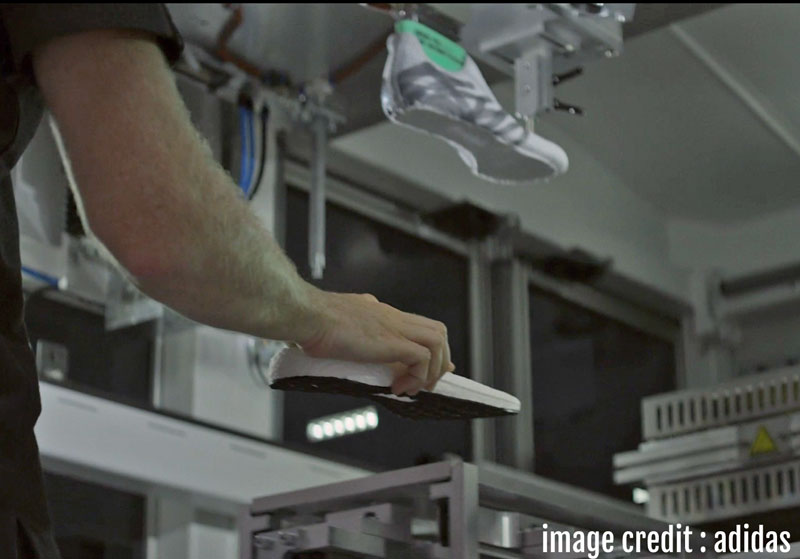
The upper is mounted on the last (see the green part at the top) and is being prepared for attachment with the Boost midsole.
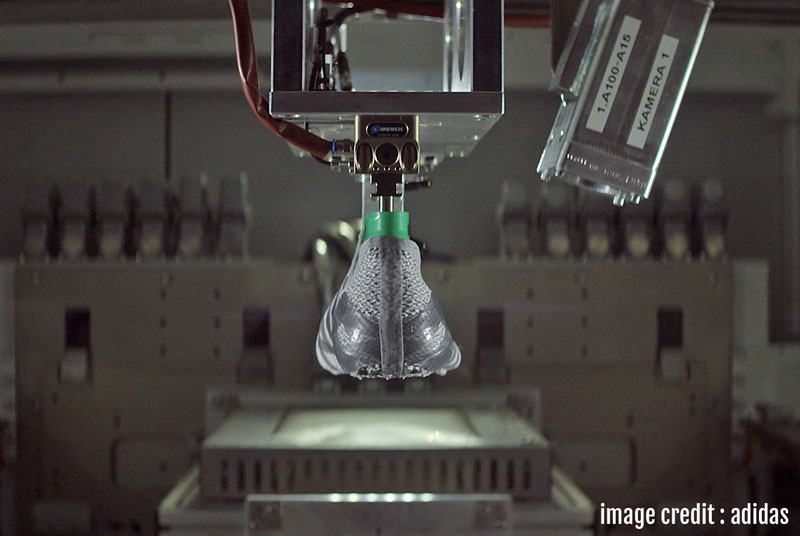
The lasted upper and the midsole will be combined using pressure. The pre-activated layer of glue ensures a strong bond between both components. Notice the camera/optical sensor on the right which ensures component alignment.
Finally, someone mounts the upper over the last and transfers it (this process appears to have been automated in the latest Speedfactory video) to the sole pressing station. The machine presses the upper on the midsole, and then the video cuts to the final scene with a model wearing the finished shoe.
Not all manufacturing steps have been covered in the video, and that’s ok because this is a PR video and not a documentary. Some of those steps were covered in an older SneakerWatch video showing the production of the adizero Primeknit, so it’s worth a watch:
Over a month ago, adidas uploaded another Speedfactory video which shows some of the missing steps. For example, a robotic arm picks the finished midsole+outsole to the lasting station.
Another robotic arm is shown handling the lasted upper, presumably to position it for attachment with the midsole. And that’s what the camera seen in this shot (on the right) is for; the optical sensor helps with the correct alignment of the midsole and the upper.
So is all of this new? Not really. The newness of the Speedfactory lies in the sum of its parts. Most of the individual processes, be it laser cutting, knitting, and robotic handling have long been components of footwear and apparel manufacturing.
Different kinds of footwear have varying degrees of automation involved in their making. Out of all the categories, automating the making of cold-cemented, strobeled footwear (running shoes and its kind) is the hardest.
Understandably, the Speedfactory isn’t as automated as one would expect it to be; important processes like stitching and lasting require manual labor.
To adidas’s credit, the Speedfactory appears to introduce automation in a couple of areas which were hitherto manual for this footwear category. That would be the automated picking/handling of midsole parts and the sole pressing operation.
Mind you, this observation only applies to footwear products such as running shoes. Footwear which involves direct injection (cleated shoes for example) have completely automated processes for attaching the sole.
So what’s keeping footwear manufacturing from becoming fully automated? Can computer-vision enabled sew-bots automate stitching, and what are their capabilities and limitations? Is micro-manufacturing at retail the future of industrial products?
We’ll cover some of these topics in detail over time – stay tuned.
(Related: Robotics in footwear manufacturing is old news. Here’s why.)
——————————————————————————————————
Credits and sources:
http://www.adidas-group.com/en/media/news-archive/press-releases/2015/adidas-first-speedfactory-lands-germany/
http://news.adidas.com/us/Latest-News/adidas-will-open-atlanta-based-facility–to-make-shoes-in-america/s/4d105d93-794c-4282-9382-d50032585cc1
qz.com/966882/robots-cant-lace-shoes-so-sneaker-production-cant-be-fully-automated-just-yet/
qz.com/569774/adidas-wants-to-make-sneakers-with-more-robots-and-fewer-chinese-factories/
qz.com/927658/adidas-is-gaining-on-nike-in-the-us-through-fashion-and-speed/
qz.com/952879/with-the-futurecraft-4d-sneaker-adidas-is-kicking-off-the-era-of-3d-printed-sneaker-production/
http://fortune.com/2016/05/25/adidas-robot-speedfactories/
http://fortune.com/2015/12/10/adidas-new-technology/
http://www.economist.com/news/business/21714394-making-trainers-robots-and-3d-printers-adidass-high-tech-factory-brings-production-back
adidas image source: http://www.adidas-group.com/en/media/media-center/ and screenshots from the Speedfactory video.
Source for all Kurtz Ersa images: kurtzersa.com
Source for all Eurolaser images: eurolaser.com
Source for all Kuka robotics images: Kuka Aggillischaft, kuka.com

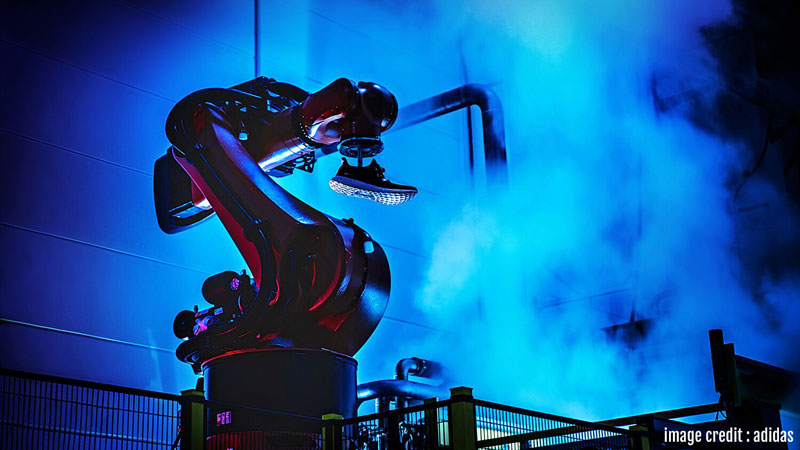
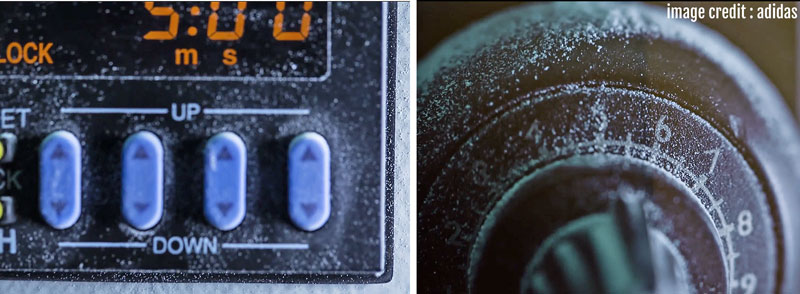
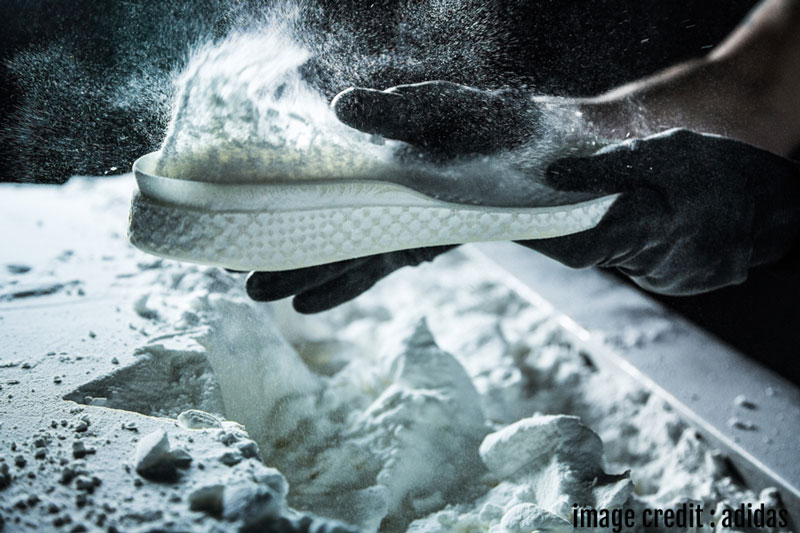
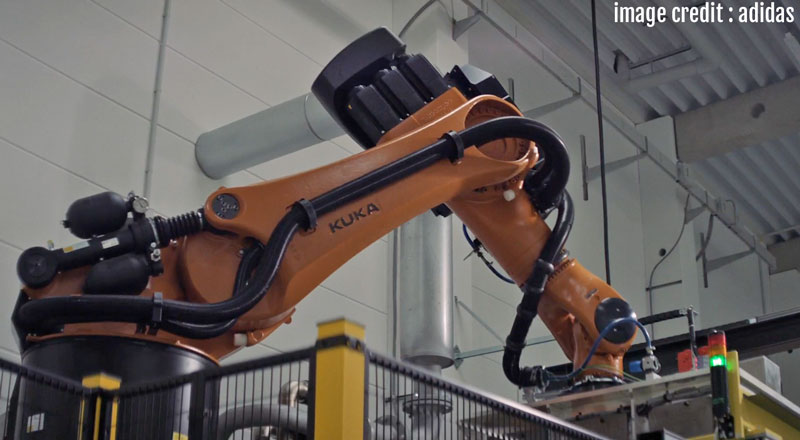
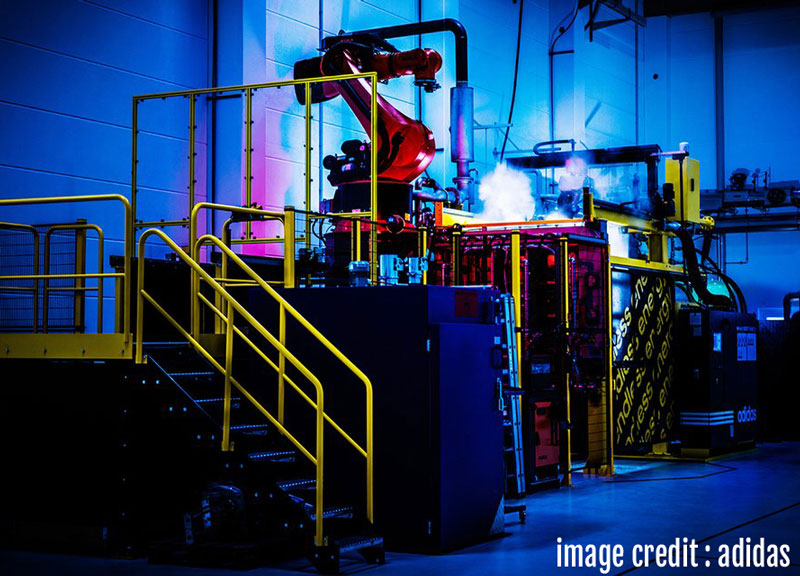
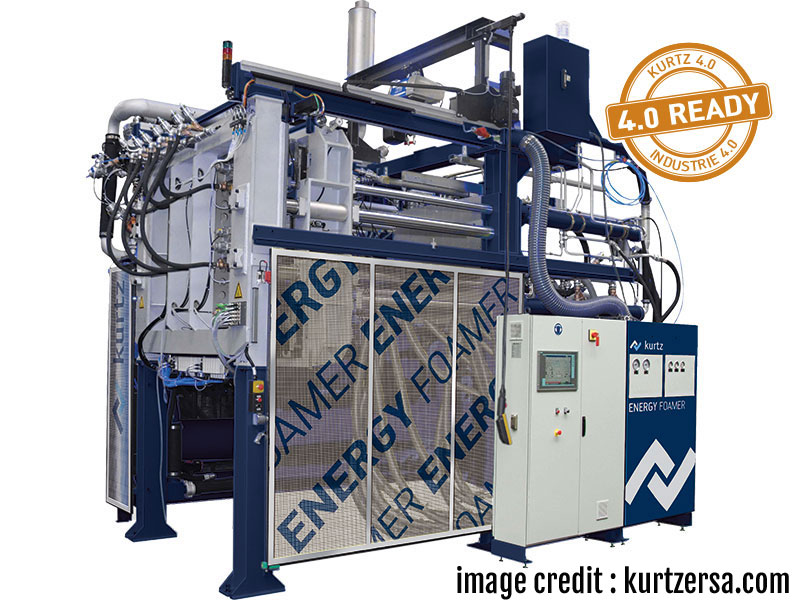
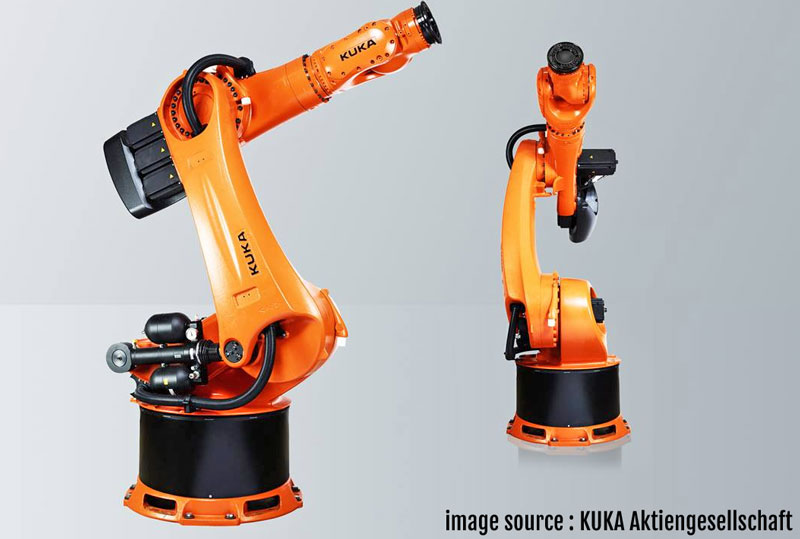
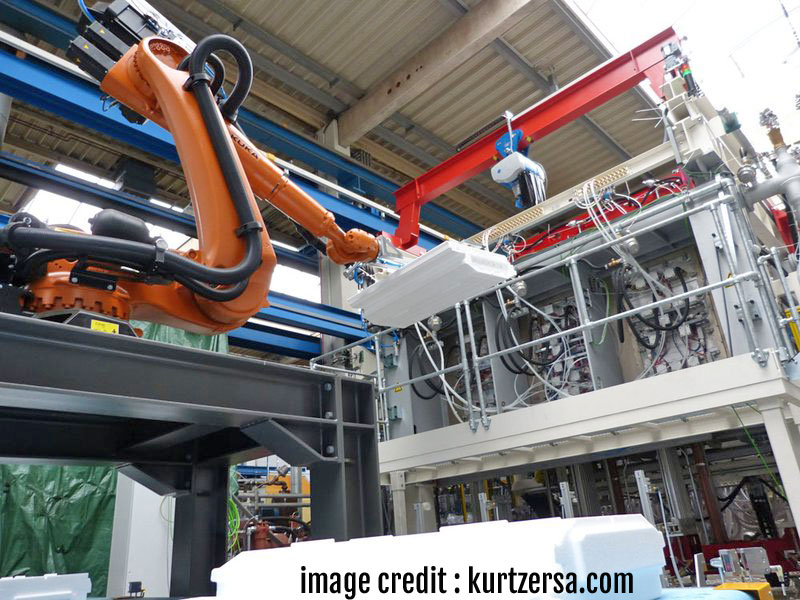
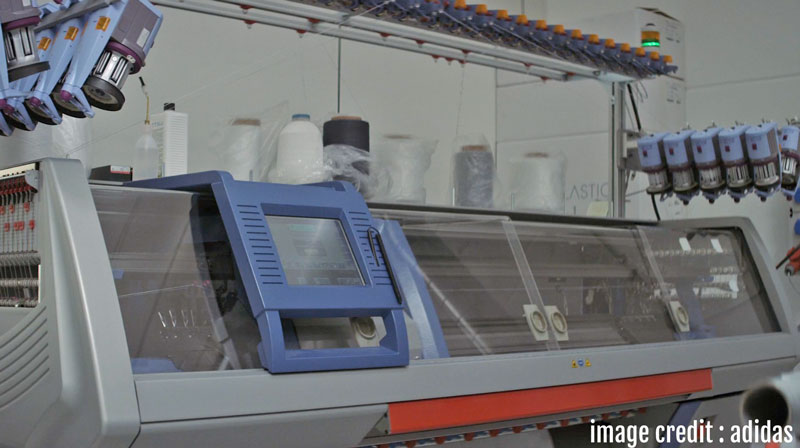
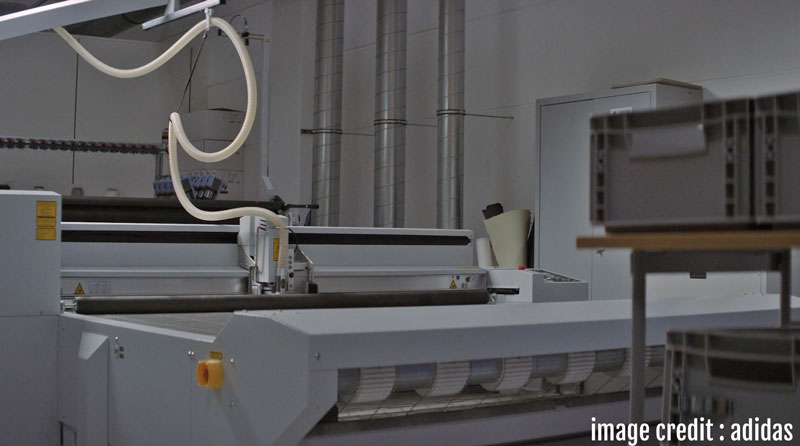
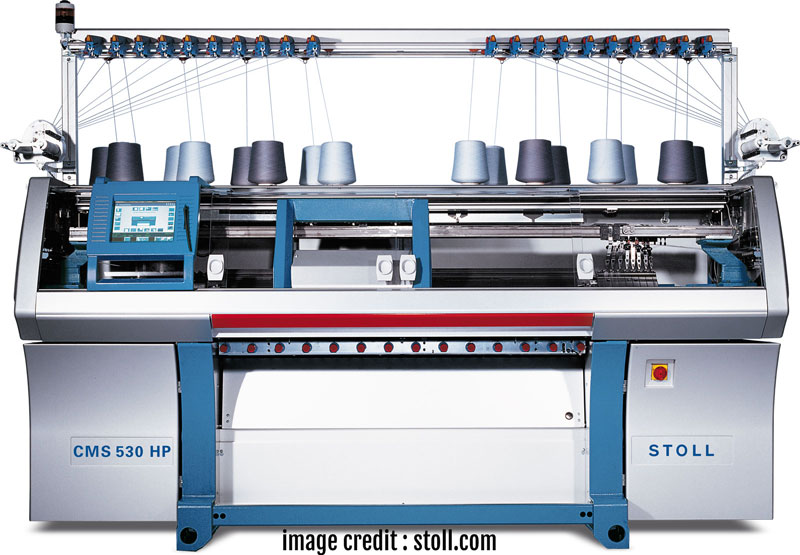
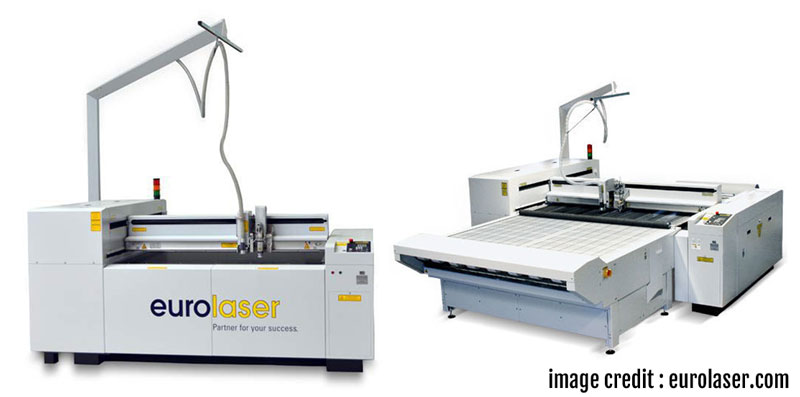
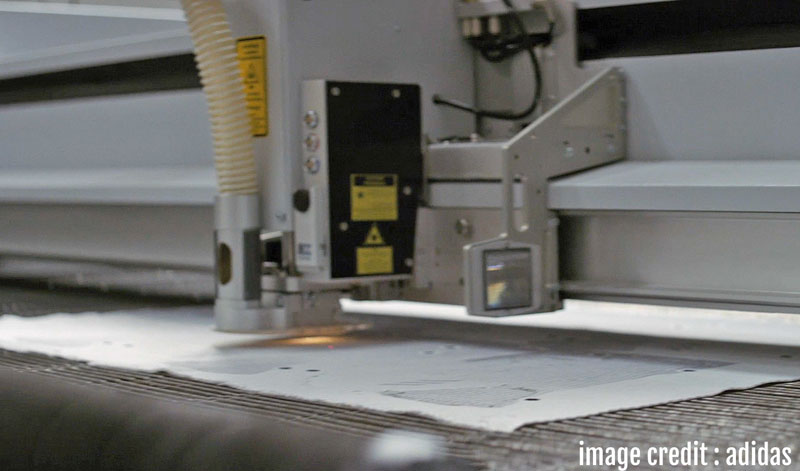

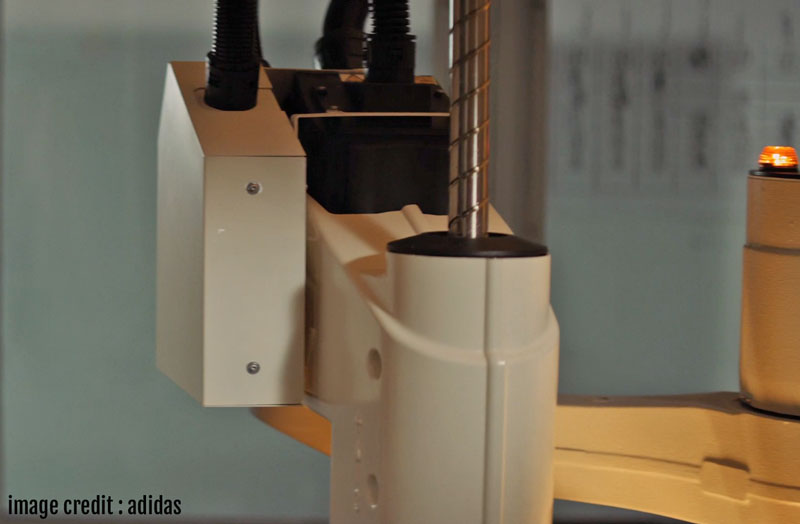
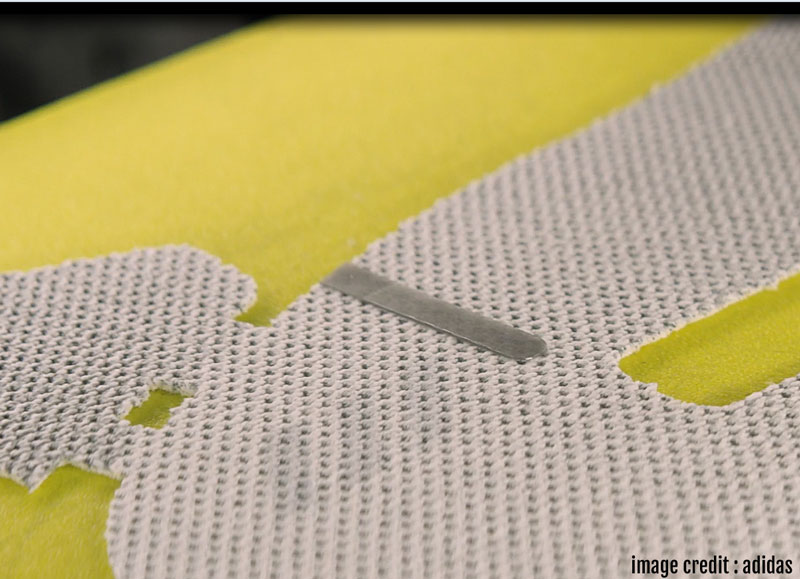
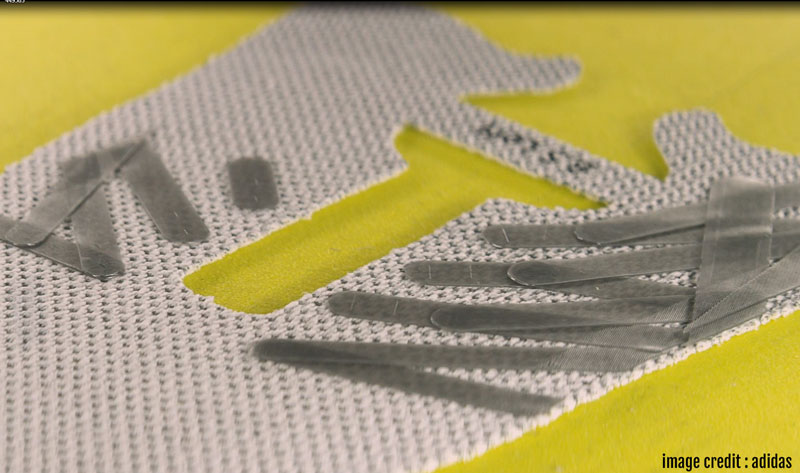
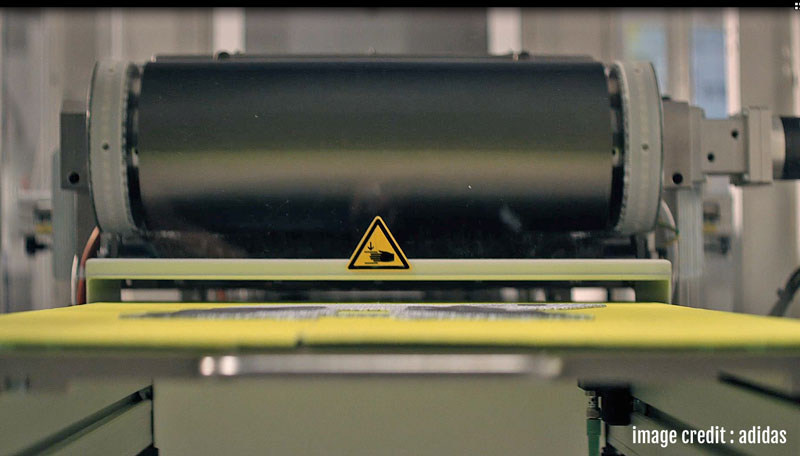
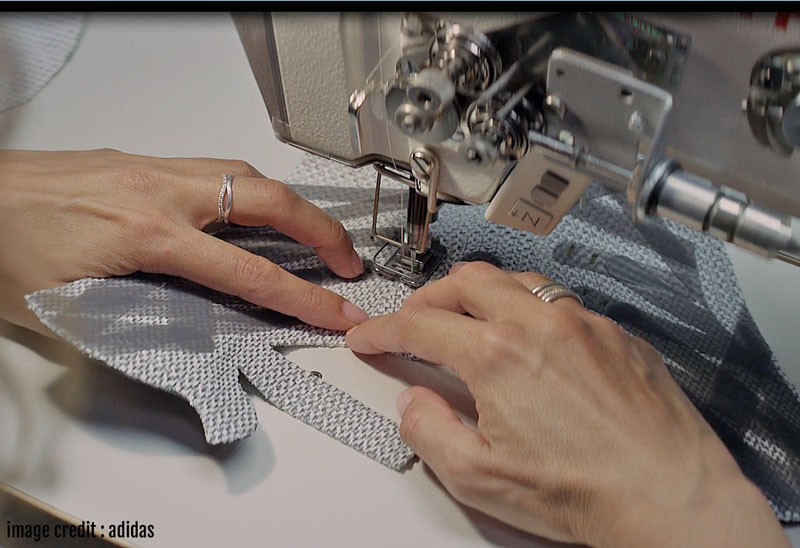
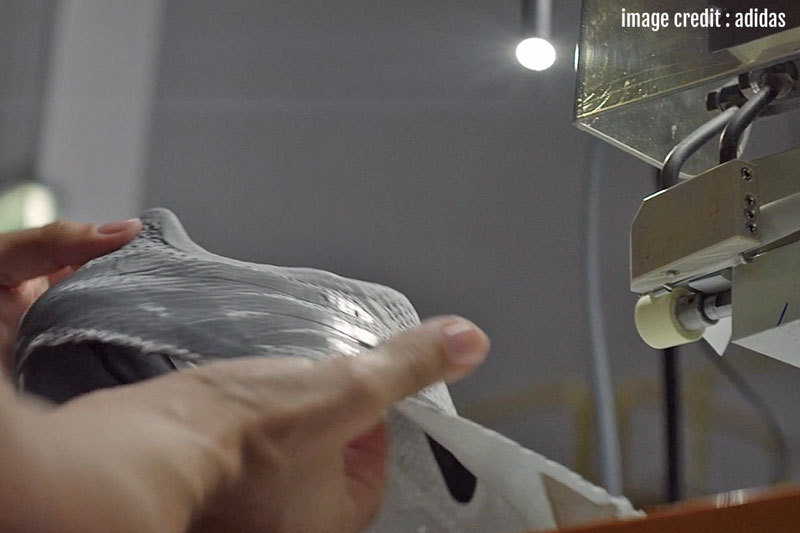
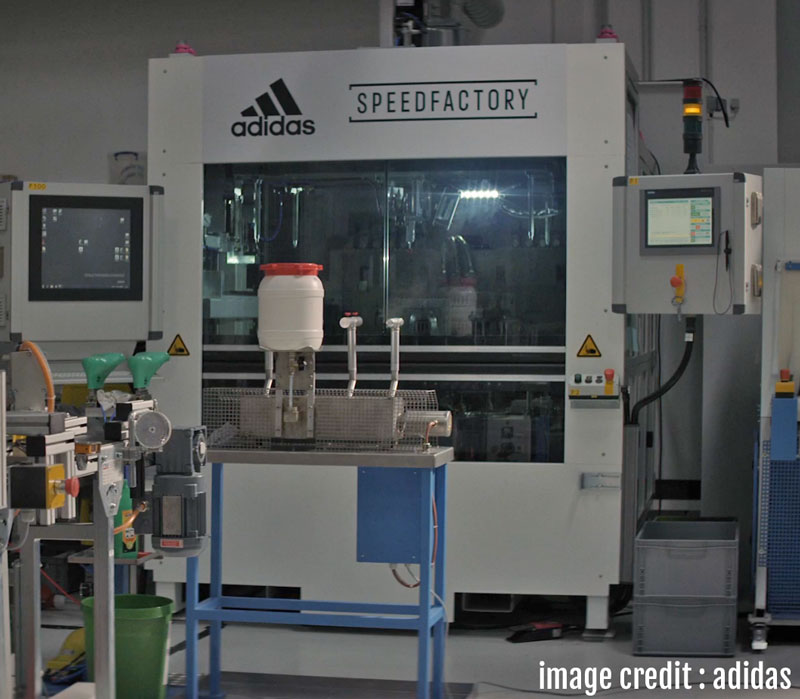
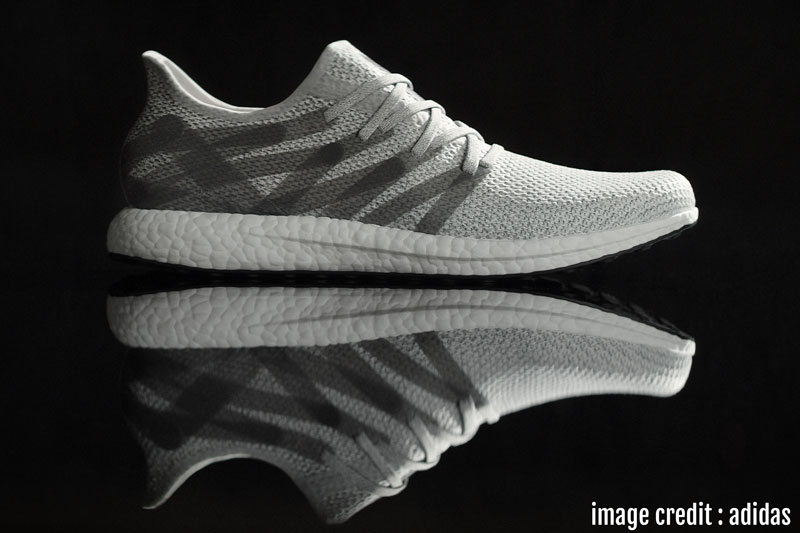
1 comment
fantastic in-depth article
Comments are closed.